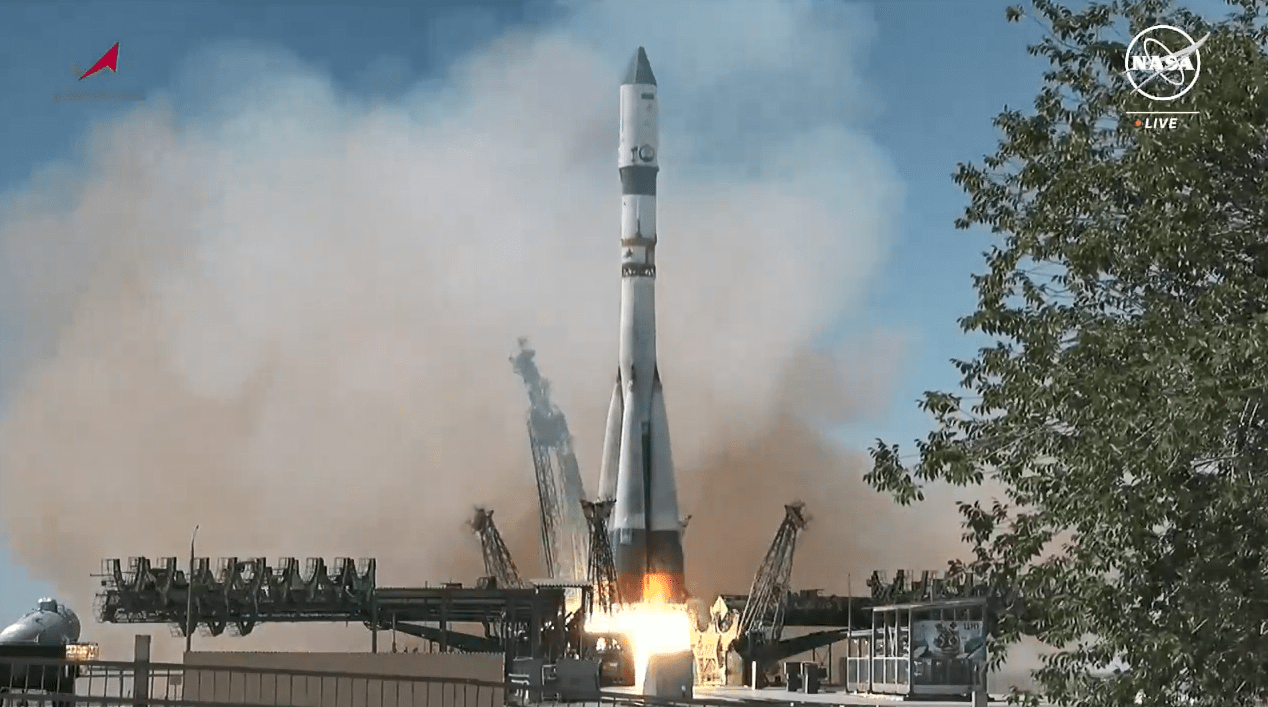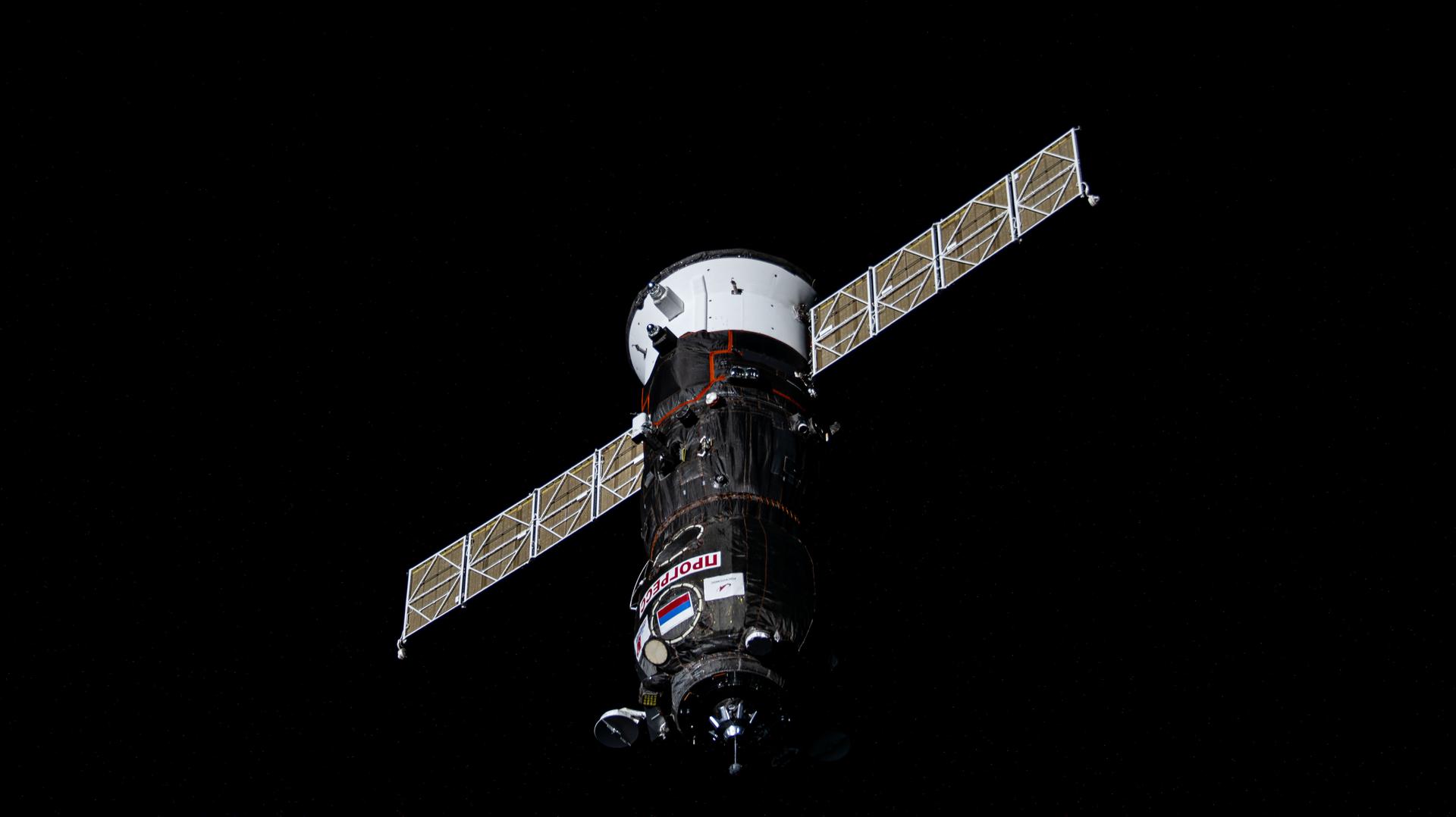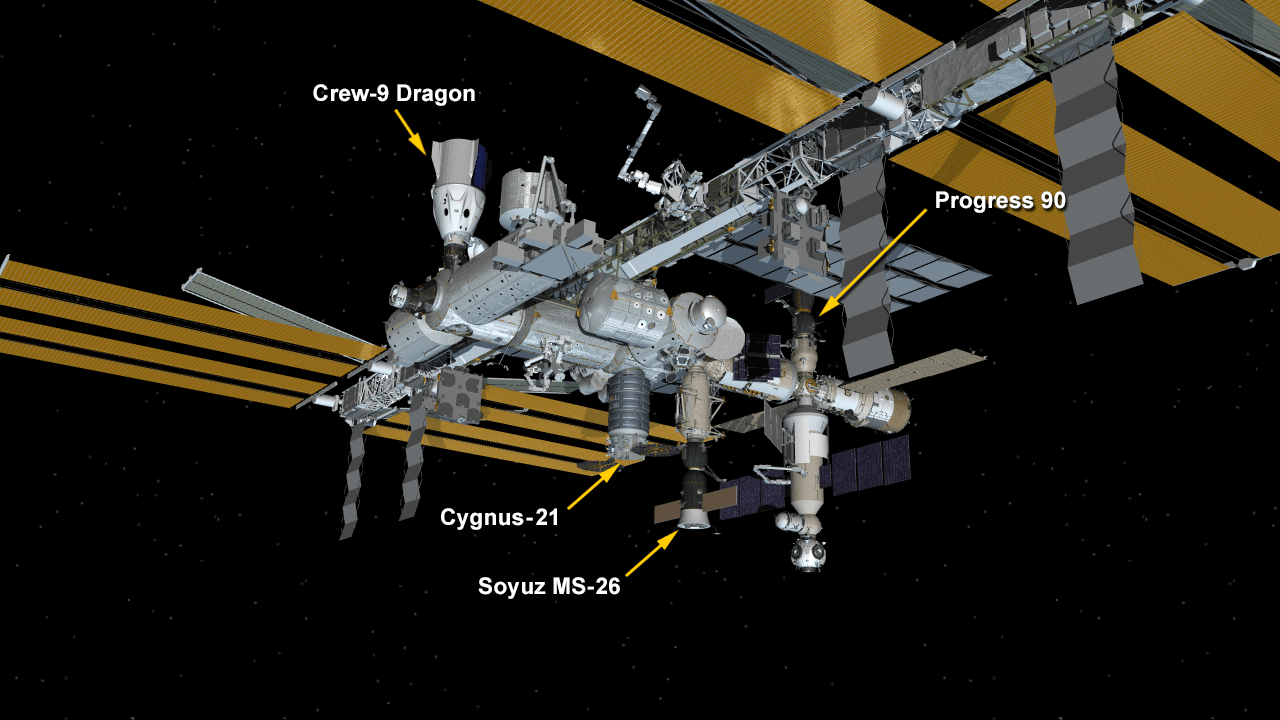Crew Works Eye Checks, Stomach Scans Before Cargo Mission Launches Today
Eye checks and stomach scans dominated the research schedule aboard the International Space Station on Thursday ensuring astronauts stay healthy in weightlessness. The Expedition 72 crew is also gearing up for the arrival of a new cargo mission this weekend.
Doctors have diagnosed eye conditions in astronauts who have reported vision issues after living and working in microgravity for months at a time. A variety of eye exams scheduled throughout a mission help researchers track and understand the space-caused optical symptoms and develop treatments to keep crews healthy.
NASA Flight Engineer Butch Wilmore kicked off the first set of eye exams on Wednesday scanning the eyes of NASA astronauts Suni Williams and Nick Hague using the Ultrasound 2 device. The trio was inside the Columbus laboratory module as doctors on the ground monitored the downlinked biomedical data in real time examining the crew’s cornea, lens, and optic nerve.
The second set of eye exams included Williams, Hague, and Roscosmos Flight Engineer Aleksandr Gorbunov who peered into a high-resolution medical imaging device examining their retina. Flight Engineers Don Pettit of NASA and Alexey Ovchinin of Roscosmos, with remote guidance from doctors on Earth, assisted with the eye study to detect and counter eye and vision issues caused during space missions.
At the beginning of his shift, Hague removed blood samples from the Kubik research incubator and spun them in the Human Research Facility’s centrifuge. He then processed the specimens for stowage in a science freezer for later analysis. The samples will be studied on the space station to understand space-caused stress on cells and tissue and how the human immune system adapts to weightlessness.
Gorbunov and Flight Engineer Ivan Vagner were back on space digestion research at the beginning of their shift on Wednesday. The two cosmonauts joined each other for ultrasound scans of their stomachs before and after breakfast for a long-running human research investigation to learn how weightlessness impacts their digestion system.
The Progress 91 cargo craft is counting to its launch to the orbital outpost from the Baikonur Cosmodrome in Kazakhstan at 4:24 p.m. EST today. Ovchinin and cosmonaut Ivan Vagner will be on duty when Progress 91 and its three tons of food, fuel, and supplies arrives on Saturday and docks to the Zvezda service module’s aft port at 6:03 p.m. Both the launch and docking will be broadcast live on NASA+.
Learn more about station activities by following the space station blog, @space_station and @ISS_Research on X, as well as the ISS Facebook and ISS Instagram accounts.
Get the latest from NASA delivered every week. Subscribe here: https://www.nasa.gov/subscribe
Powered by WPeMatico
Get The Details…
Mark A. Garcia








